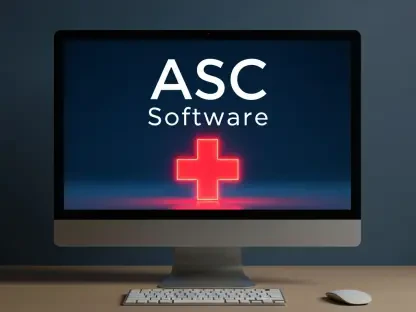In recent years, the emergence of AI in medical imaging has revolutionized diagnostic processes, promising greater accuracy and speed. The Marie Curie Chest AI Model is at the forefront of this technological disruption, offering an innovative approach to chest X-ray analysis. With its cutting-edge architecture, the model positions itself to meet the increasing demands for precision and efficiency in healthcare.
Analyzing the Core Principles and Components
The Marie Curie Chest AI Model is founded on the Vision Transformer architecture, a novel framework leveraging advanced machine learning techniques for image processing. This architecture underpins the model’s ability to interpret complex radiographic images with remarkable accuracy. By utilizing this state-of-the-art design, the model addresses key challenges in medical imaging, providing a scalable and robust solution for diverse clinical environments.
Coupled with a focus on binary classification optimization, the model operates under meticulously designed parameters to distinguish between normal and abnormal chest images. The embedded fine-tuning API allows developers to customize solutions using their labeled datasets, optimizing the model’s adaptability to different scenarios. This feature holds promise for driving forward personalized medicine, bringing tailored AI-driven insights to the forefront of healthcare delivery.
Latest Innovations in AI Integration
As AI becomes more deeply woven into the tapestry of medical imaging, the Marie Curie Chest AI Model exemplifies the latest advancements in this integration. Innovations include seamless API deployments that facilitate rapid implementation in diagnostic settings. The secure environment for model customization allows for reproducible workflows, setting new standards for reliability in clinical applications.
The collaboration between technology providers and medical institutions mirrors growing trends in AI investment and deployment, highlighting a shift toward broader acceptance and active utilization of these solutions. Institutions such as DeepHealth have successfully adopted the model, demonstrating its readiness for immediate industry application. Additionally, partnerships with academic establishments pave the way for ongoing evolution and discovery, enriching the model’s clinical acumen.
Industry Implementations and Real-World Applications
Industries across healthcare are recognizing the transformative potential of the Marie Curie Chest AI Model, with examples illustrating successful implementation. One notable commercialization is in collaboration with DeepHealth, where the model has been fine-tuned to deliver customized chest radiography solutions, minimizing lead times for deployment.
Moreover, the model’s capacity for personalization has proven advantageous for enterprises like RadNet, facilitating strategic advancements in medical imaging workflows. These applications underscore the model’s adaptability to diverse organizational needs, driving efficiency and innovation.
Navigating Challenges and Limitations
Despite its promising capabilities, the Marie Curie Chest AI Model faces various challenges in its journey toward widespread adoption. Technical complexities, such as model validation and regulatory compliance, pose significant barriers, necessitating ongoing innovation and support. Efforts to address these issues include provisioning proprietary data access and enhancing validation tools, signifying strides toward overcoming current limitations.
The technology’s broader acceptance will depend on effectively navigating these obstacles, ensuring adherence to regulation while maintaining the pace of technological progress. Continued collaboration between developers, healthcare providers, and regulatory bodies is vital to achieving a harmonious balance between innovation and compliance.
Envisioning Future Advancements
Looking forward, the Marie Curie Chest AI Model holds the promise of ushering in groundbreaking advancements in medical imaging, potentially transforming diagnostic practices. The exploration of new modalities and linguistic interfaces forebodes an era where AI complements human expertise more intimately than ever before.
As the model further matures, its impact on healthcare is expected to be profound, supporting earlier detection of health conditions and better patient outcomes. Societal benefits are vast, positioning the model as a catalyst for enhancing public health and fostering economic growth within the AI sector.
Conclusion: Assessing the Potential and Path Ahead
In summary, the Marie Curie Chest AI Model stands as a pivotal development in the convergence of artificial intelligence and medical imaging. Its Vision Transformer architecture offers a leap forward in radiographic analysis, bolstered by a robust customization framework. While challenges remain regarding regulatory compliance and technical complexities, ongoing innovations show promise for overcoming these obstacles. The model’s successful deployments and readiness for real-world application underpin its potential to reshape healthcare, heralding an era of precision medicine. As integration continues to scale, the Marie Curie Chest AI Model is poised to deliver significant societal and healthcare advancements, paving the way for an innovative future.









